- Call us: 01444 237070
- Contact Us
- Stores
- Sign In / Register
-
- Back
- Used Cameras
- Used Lenses
- Used Video
- Used Film Equipment
- Used Stock Alert
- Used Accessories
- Recently Added Used Equipment
- Used Clearance
- Faulty
- Park Picks
- Sell or Part Exchange
- Trade-In
- Blog
- New in
- Call us
- Contact us
- Stores
- Sign in
- Categories
- Tips & Inspiration
- Reviews
- News
- Events
- Features
- Buying Guides
- Competitions
Ideas and Tips For Creative Portrait Photography
Portrait photography is one of the most popular genres, with countless stunning examples of images which have effectively captured the character of a person, or group of people. It’s an art form that goes beyond merely capturing faces, and is about telling stories, conveying emotions, and exploring mood through lighting and composition.
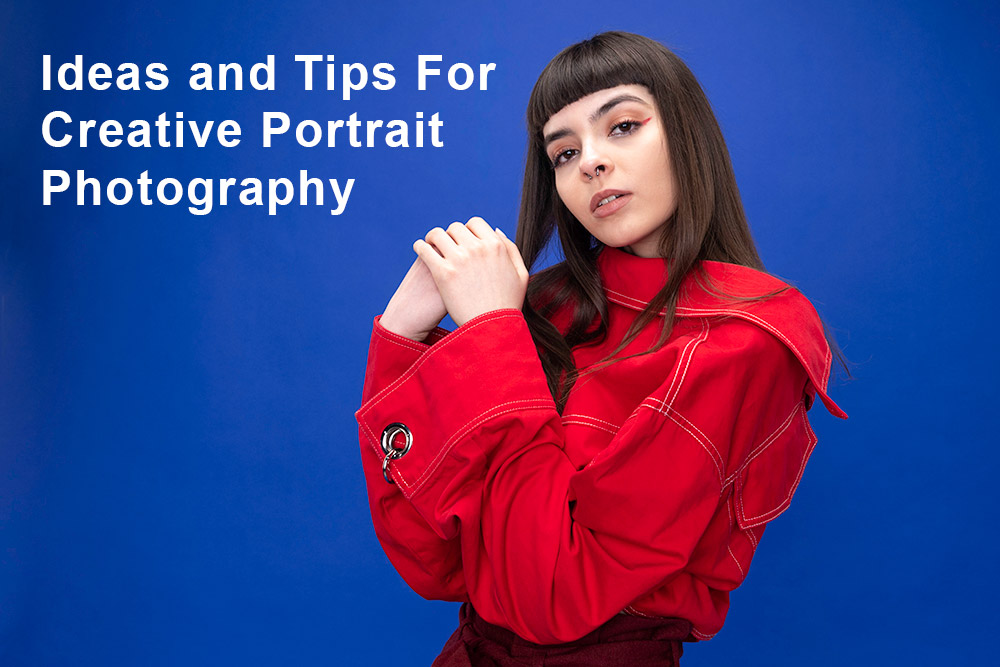
With so many portrait styles, different lighting options and specific types of equipment, you might not only be confused by what makes a good creative portrait, but also what gear you need to capture them for yourself.
We’ve got you covered if you’re wondering how can I make my portrait pictures more interesting, with ideas and tips for creative portrait photography that you can do at home, in a studio and on location.
We touch on cameras and lenses, focus on lighting, flashguns and accessories, which can help you draw out the most creative portrait from a variety of situations. You’ll also discover which photographic techniques were used for portrait examples, so you can learn the tricks of the trade and wow your audience with your own creative shots.
Whether you're a seasoned photographer seeking inspiration or a beginner embarking on a creative journey, these portrait photography ideas will help you capture portraits that are not just beautiful images but compelling narratives of a subject frozen in time.

Sample photo with flashgun using Canon EOS 5D Mark IV and Canon EF 35mm f/1.4L II USM Lens @35mm. Camera settings – 1/125 sec. f/1.4. ISO 250 ©Christopher Espinosa Fernandez
What are the different types of portrait?
Portrait photography encompasses a diverse range of styles, each uniquely capturing the subject's personality and story within a scene. Each type offers a distinct approach, allowing photographers to choose the style that best suits their creative vision and the narrative they want to convey. A few of the most popular include:
- Traditional Portraits are timeless and focus on the subject's face, highlighting their features and expressions
- Environmental Portraits place the subject in a context relevant to their life or profession, adding depth and storytelling to the image
- Candid Portraits capture genuine moments, often showcasing spontaneity, authenticity and is an areas which encompasses street photography and similar popular genres
- Conceptual Portraits delve into the photographer’s imagination, incorporating symbolic elements or themes to convey a deeper meaning
- Fashion Portraits emphasise style, clothing, and accessories, turning the subject into a visual statement
- Group Portraits bring people together, creating a composition that reflects relationships and connections.
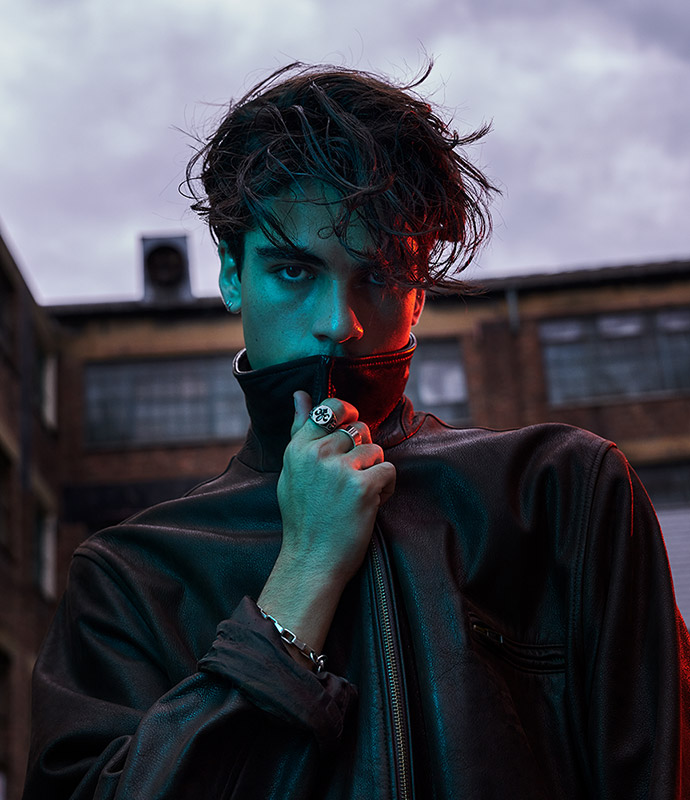
Sample creative portrait with Profoto A2 Monolight using Leica SL2 and Leica Vario-Elmarit-SL 24-70mm F/2.8 ASPH Lens @35mm. Camera settings – 1/160 sec. f/4. ISO 400
What qualities would a strong portrait have?
There are a number of considerations to take into account when thinking about capturing a creative portrait. A strong portrait would have several qualities that contribute to its impact and resonance with the viewer. Although you don’t want every quality in every image, think about the qualities you want to convey.
Below are some of the main elements to consider when capturing portraits.
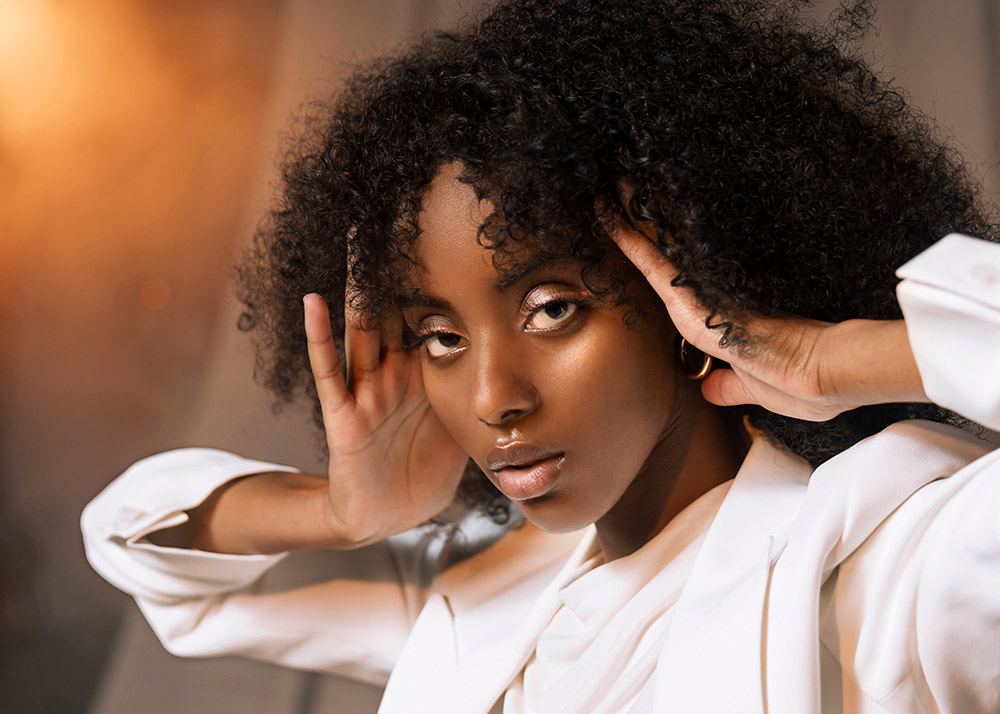
Sample portrait composition, with flashgun using Canon EOS-1D X Mark III and Canon EF 24-70mm F/2.8L II USM Zoom Lens @50mm. Camera settings – 1/50 sec. f/2.8. ISO 200
Portrait Composition
Just as any photograph, a well composed portrait incorporates elements, which create an aesthetically pleasing and harmonious image, taking into account framing, balance and the rule of thirds. Composition can be far more complex, however if you consider these basic elements your images will improve quickly.
Powerful photographs can break compositional rules, however it pays to explore the rules initially, in order to more successfully bend them when you see the opportunity.

Emotion in a portrait
A strong portrait captures a genuine emotion, perhaps revealing the subject's mood, personality, or a narrative, which you are trying to convey. Many portrait photographers consider emotion as an essential ingredient to their best shots, taking a good image to greatness.
Emotions are often portrayed in documentary, street, family and wedding photography, helping to tell the story through the eyes of the photographer, as they witness or orchestrate a memorable moment. Many of the world’s most powerful photographs include emotion as the central theme, such as those by Steve McCurry, Joey L and Platon to name a handful.
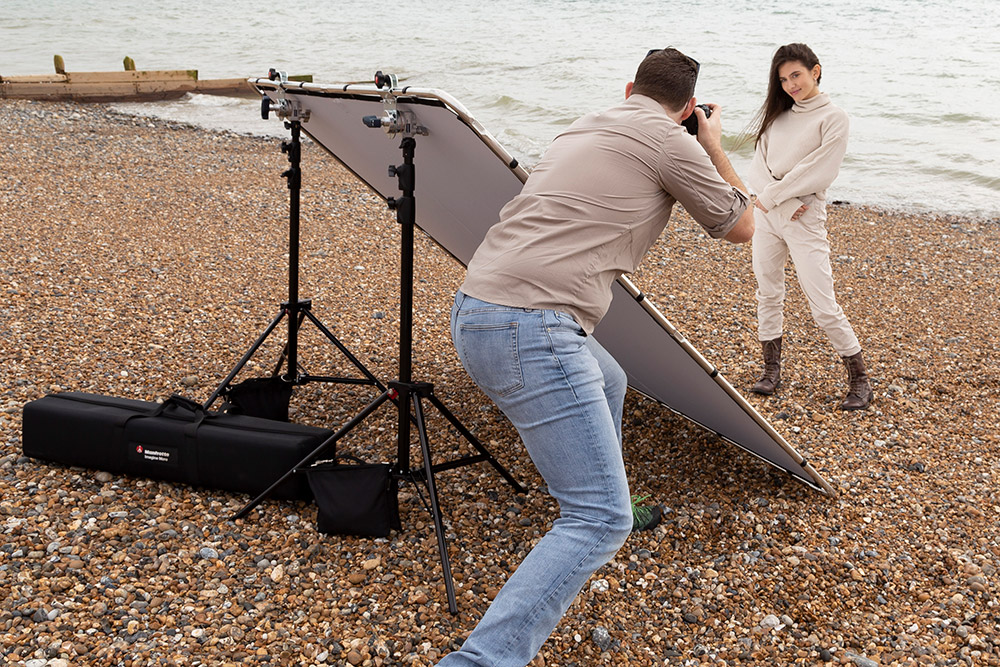
Lighting in portrait photography
Lighting helps to shape the mood and create atmosphere in portrait photography. Whether an image incorporates natural light, artificial lighting or both, skilful understanding of light enhances features and adds depth to the final result.
Lighting options are extremely varied. If you are a beginner, using too many lights can be confusing, try working with a single flashgun mounted on your camera, advancing to off-camera flash setups, studio lighting and creative LED lighting as you progress. It’s quick and easy to learn flash photography basics, which allows you to capture creative portraits using speedlights and gels (coloured gels), and other creative techniques to add instant atmosphere to a scene.
Having just launched, the Sony a9 III is worthy of a special mention, as it breaks down barriers to flash photography, with a world-first global shutter, enabling flash at any speed. Traditionally cameras are restricted to a maximum of around 1/250 second for flash photography, whereas the use of a global shutter puts the A9 III into the same realms as leaf shutters and medium format camera systems.

Sample portrait with natural lighting only and pin sharp eye AF, using Sigma fp L and Sigma 50mm F/1.4 DG DN Art Lens For L-Mount @50mm. Camera settings – 1/2000 sec. f/1.4. ISO 100
Where do you focus in a portrait
The eyes are windows to emotion and provide a connection with the subject. A clear, sharp focus on the subject's eyes is often the hallmark of a powerful portrait. Typically you should try and focus on the eye nearest the viewer, which should be pin sharp to avoid confusion.
Many mirrorless cameras include advanced Eye detection AF, which takes a lot of the guesswork out of accurate focusing, which is especially handy for fast-paced portraiture, or candid photography.
Affordable cameras with Eye AF include Canon mirrorless cameras such as the EOS R8 and Canon EOS R100 With RF-S 18-45mm Lens Kit.
Sony mirrorless camera users gain access to some of the most advanced human Eye AF in cameras like the Sony A6700 and A7C II, while Nikon photographers can choose between the Nikon Z50 and Z30. All of these and many more offer extremely competent Eye detection, which helps ensure the eye is in sharp focus, even when the subject moves.
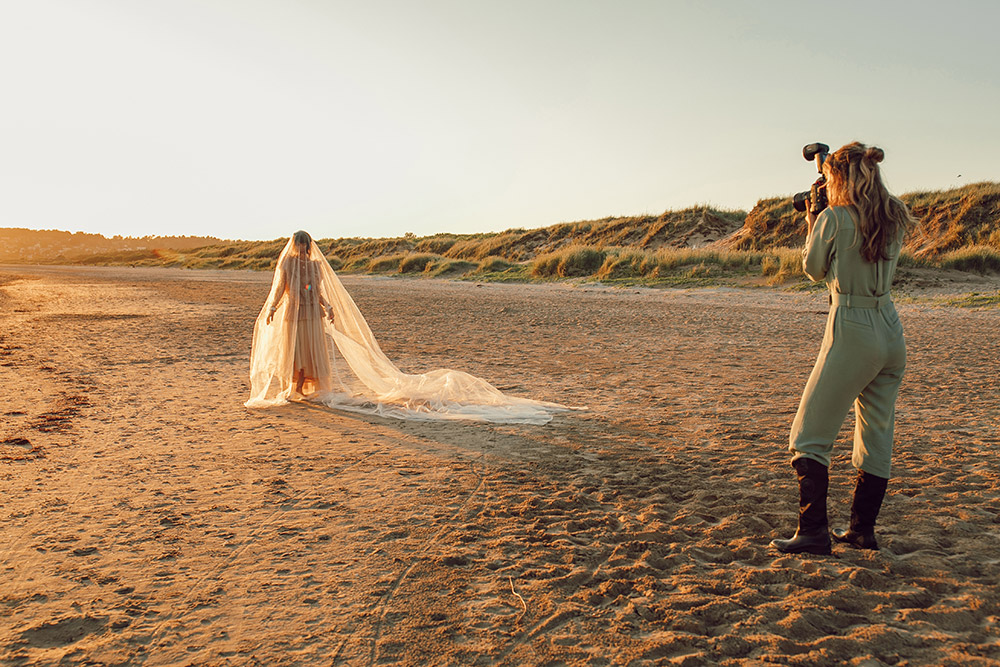
Depth of Field in portraits
The ability to capture a shallow depth of field is highly desirable for portraits, which is why camera lenses with a wide aperture, are often considered the best portrait lenses. Controlling depth of field ensures the subject is the focal point, while allowing for a pleasing background that complements the overall composition.
To master portrait photography, consider investing a prime lens with a wide aperture and shooting virtually everything with that single lens. This will help you gain a deeper understanding about depth of field, the focus plane and bokeh.
Classic portrait options include 50mm lenses, 85mm and 135mm lenses, all of which are readily available both new and as money-saving used lenses. For environmental portrait photography you can choose a slightly wider focal width, like a classic 35mm lens.
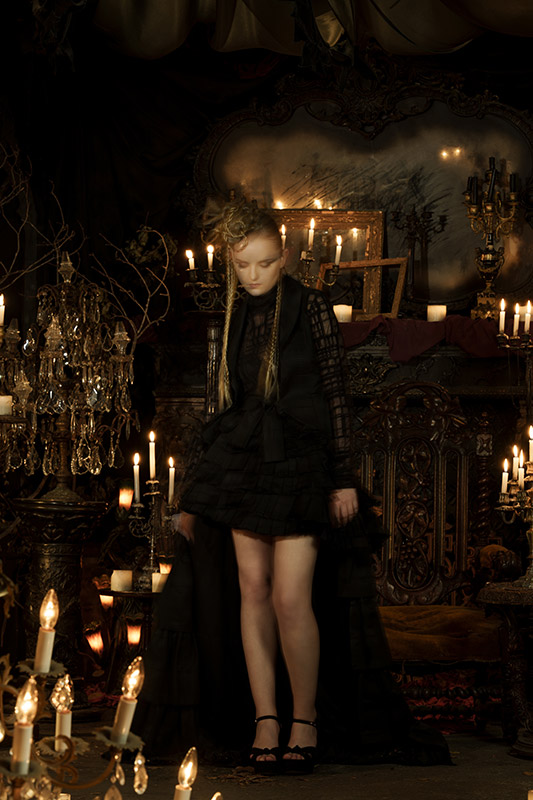
Sample portrait pose with motion, using Tamron 70-180mm f/2.8 Di III VC VXD G2 Lens for Sony E, sample data not available. ©Kazuyuki Omori
How to pose a portrait
Intentionally posing the portrait subject can convey a particular mood, or create a more flattering shot. Natural and comfortable poses lead to more authentic portraits, while difficult body angles cause tension, and create a different mood. Experiment with your subject and find a pose which complements the result you’re going for.
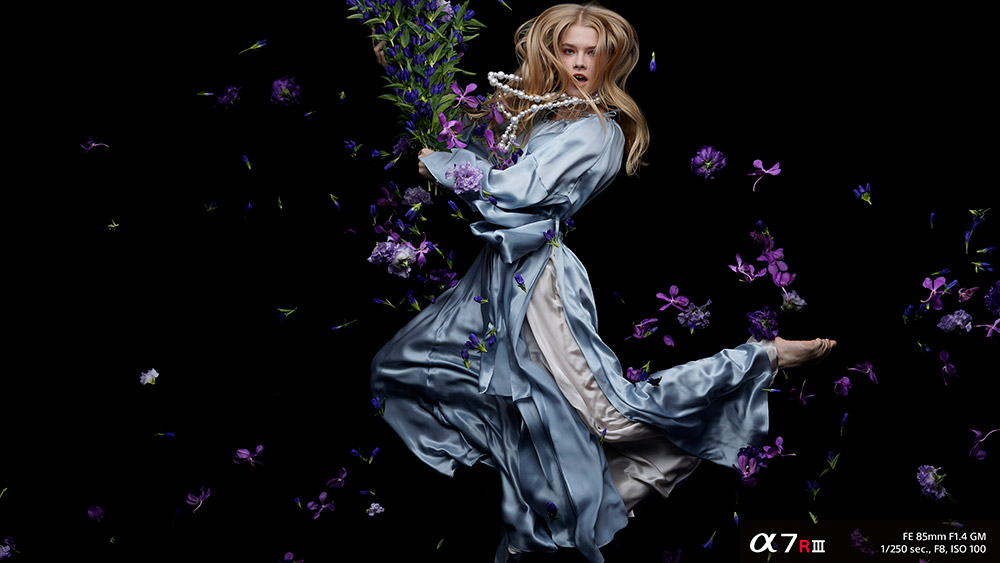
Sample portrait with motion against black background, using Tamron 70-180mm f/2.8 Di III VC VXD G2 Lens for Sony E, sample data not available. ©Kazuyuki Omori
What makes a good portrait background?
A thoughtfully chosen background supports the subject without distracting from them, and complements the narrative or theme of the portrait. Many professional portrait photographers will have a selection of studio backgrounds, which include background papers, support systems and all-in-one location kits, like the Manfrotto Skylite Rapid kit.
When capturing images with natural backgrounds, try and create subject separation in order to avoid distractions. Look at which colours are present so that the subject is not overshadowed by a bright or distracting colour, and move yourself to compensate for any distractions. You can also use a collapsible reflector to bounce fill light, without needing a full lighting setup.
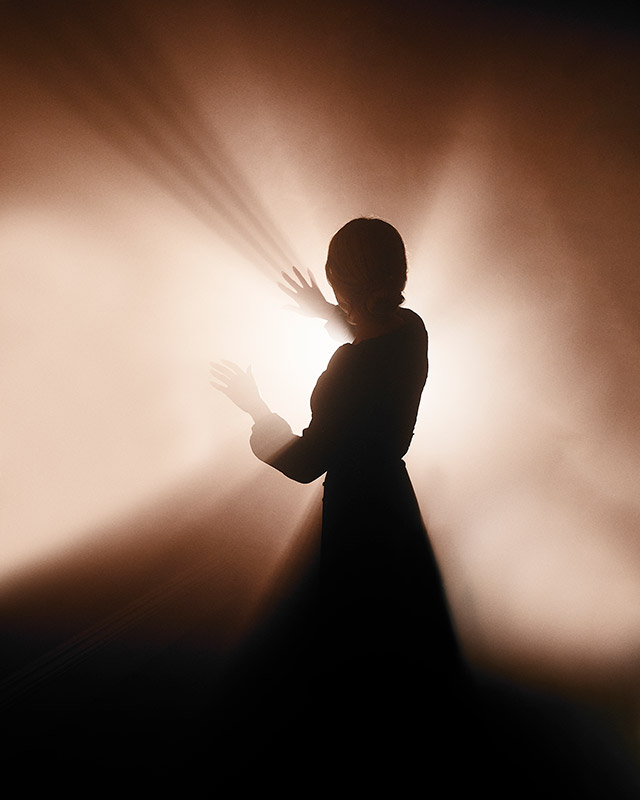
Sample creative storytelling with flashgun behind subject using Canon EOS 5D Mark IV and Canon EF 35mm f/1.4L II USM Lens @35mm. Camera settings – 1/160 sec. f/5.6. ISO 200 ©Christopher Espinosa Fernandez
Storytelling in portraiture
A strong portrait often tells a story or elicits curiosity, going beyond superficial aesthetics. An image with a strong narrative invites viewers to engage and connect with the subject and think about the story behind the scene.
Photographers such as Sevil Alkan take a documentary approach to capturing a photo narrative, with spontaneous and candid images, while others such as Ingrid Alice Irsigler adopts a directed approach, often through the use of colour.

Sample of technically excellent portrait, using Tamron 70-180mm f/2.8 Di III VC VXD G2 Lens for Sony E, sample data not available. ©Kazuyuki Omori
Technical excellence
Attention to technical details, such as proper exposure and colour balance, ensures a professionally polished result. If you want to capture images like Mario Testino or Lorenzo Agius you’ll need to know your gear inside and out.
Perspective in portraits
A distinctive viewpoint or an unconventional perspective adds an element of intrigue, setting the portrait apart from the ordinary. Try shooting upwards from below the subject to get a hero pose, or level with the eyes to create a natural connection.
A strong portrait which establishes a connection between the subject and the viewer, evokes empathy, admiration, and relatability.

Using the Nanlite Forza 60C Monolight With RGBLAC Six-Colour Mixing to create coloured lighting effects
How do you become creative in portrait photography?
By combining some of the elements discussed you can transform your portrait photography and become more creative. Adding off-camera lighting, changing the mood with coloured gels and connecting with the viewer through perspective, can for example create a more compelling photograph, than simply pointing your camera at the subject.
You can advance your skills quickly by experimenting and shooting frequently with the same focal width lens, as well as by gaining a refined understanding of your equipment. By understanding focus point, depth of field, and how a background or story affects an image, you can readily emulate similar results during each future portrait session.
Consider moving to a mirrorless camera with Eye AF, and choose a wide aperture mirrorless lens, which can instantly transform how you shoot, and elevate the potential for truly unique creative portraits. Add a flashgun to introduce supplemental lighting and bounce light with a photography reflector to add fill, without the need for a whole lighting system.
Any of these photography tips can lead to a compelling image, which will wow your audience and keep your motivation to improve and progress as a portrait photographer.
Share this post:
By Nick Dautlich on 01/12/2023

Trade in your old equipment
Fast and easy trade in service ensures your old gear is collected efficiently and you are paid quickly! It's very simple to trade in your unwanted photography gear. Just head over to our dedicated Sell or Part Exchange page, fill out the details, and we'll get back to you with an offer for your old gear. Take the cash, or put it towards the cost of your new gear. It's up to you! Find out more
sign up to the newsletter
Keep up to date on the latest photography news, events and offers. Sign up now
